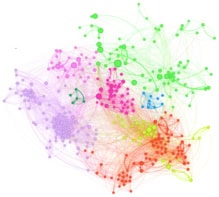Researchers looking for signs extra-terrestrial intelligence are planning to use idle computers connected to the Internet to process their data. Over 115, 000 volunteers have already agreed to allow their computers to be linked together to create a 'virtual' supercomputer to look for intelligent life. This virtual machine will analyze data collected as part of ongoing astronomical observations by the Arecibo radio telescope in Puerto Rico, the largest radio telescope in the world. The Search for Extra-Terrestrial Intelligence at Home - or SETI@home - looks for narrow-band signals associated with alien intelligence, such as radio or television signals. The project is organized by the University of California at Berkeley.
In the past similar approaches have been used to crack encryption codes or calculate the largest prime number, but this is the first time such a scheme has been used for analysing raw scientific data.
The system works by fooling the computer into running a screen-saver package called SETI@home every time the machine is idle. As soon as user returns to work, the program shuts down. As most computers are only used 8 hours a day, this gives the project 16 hours a day of computer time. The large number of machines used in the project will help SETI watchers to analyze smaller parts of the frequency spectrum more thoroughly than current SETI projects. The approach will also be ten times more sensitive than previous experiments.
So far the researchers have released Windows and UNIX prototypes of the software, and a Mac version is planned. Within the next six months the team hope to finish a more polished package that will also provide three different types of visualization of the experiment: science mode will describe the analysis taking place on the local machine and the significance of any results; sky progress mode will show what parts of the sky are being covered by the entire experiment, and summarize all the potentially interesting results found so far; and Earth progress mode will focus on the people participating in the experiment, with a view of the earth showing all the individuals and organizations currently participating. Once up and running, the experiment is expected to run for at least two years.



